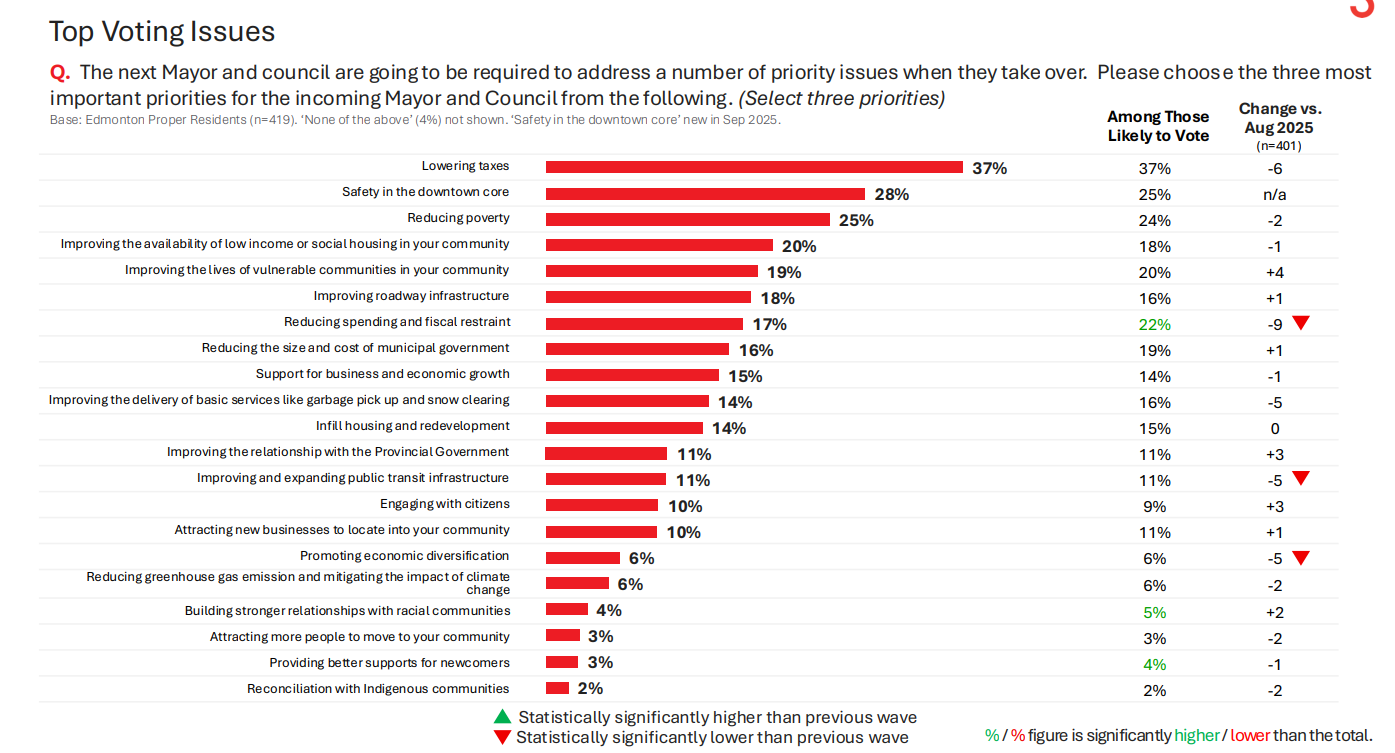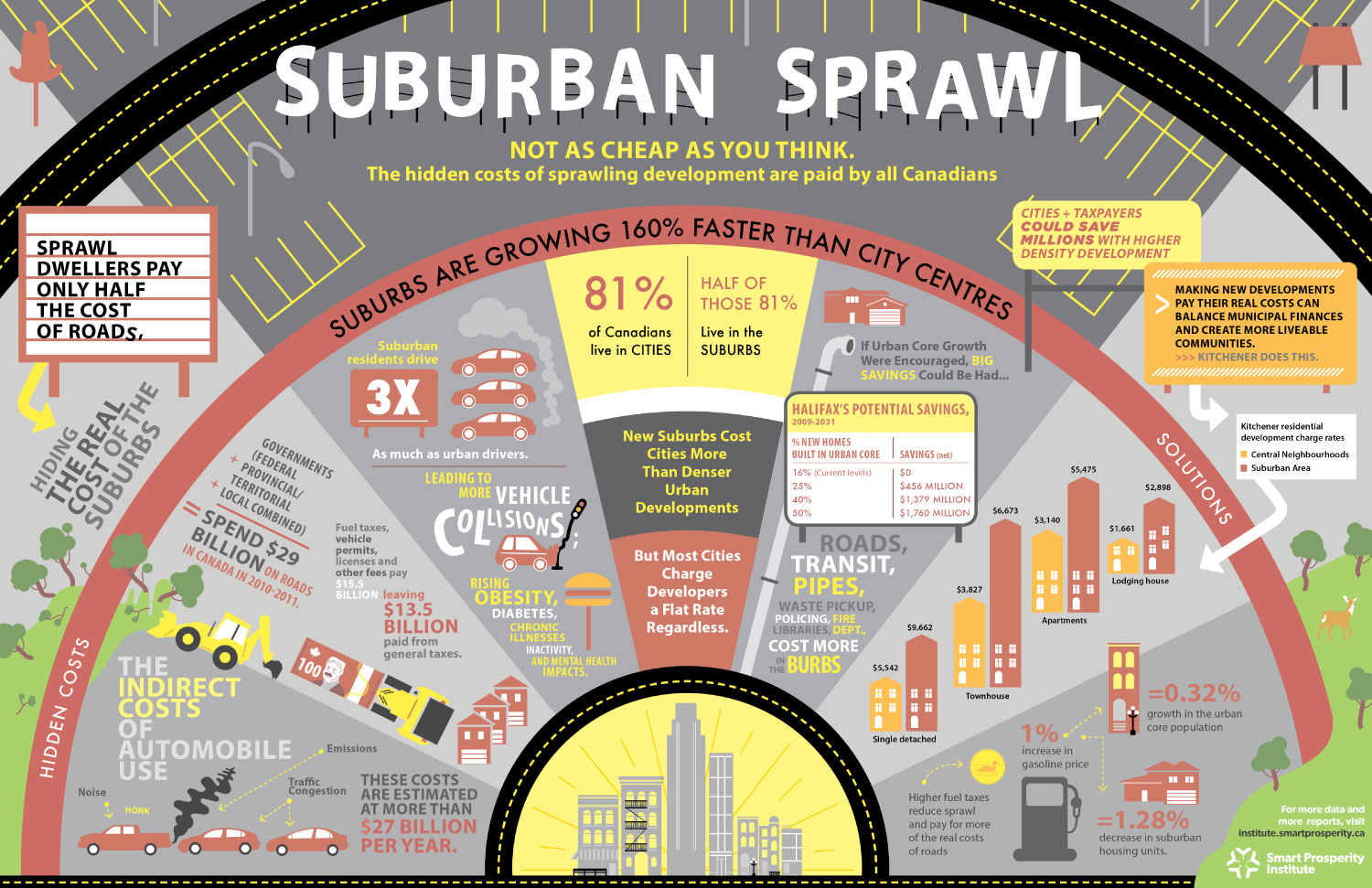
Recently, Leger conducted two polls asking Edmontonians what issues matter most leading up to the upcoming municipal election on October 20th. The top 3 issues are about taxes, poverty and spending, with people thinking that the city is going in the wrong direction.
Infill only appeared at the 11th spot of the issues most on peoples’ minds. It was ranked as less important than garbage collection. The thing is, infill and density are a key factor for improving the actual top issues: lowering taxes, reducing poverty, and lowering spending while keeping services constant.
The top 3 priority issues according to the Leger poll are, reducing property taxes, reducing poverty, and reducing spending and fiscal restraint. Infill and density were only 11th, but they should be much lower since they help address the top issues. The problem is, most of this change takes place over a long period of time, so people won’t see these effects right away, and that also means we can’t pause or roll back the progress we’ve already made.
This is just math; if you have more people occupying the same amount of land, with the same amount of services, each person occupying that land can functionally pay less. This already happens to some extent already where the denser areas, like downtown, subsidize the low density suburbs. In addition to lowering taxes, other costs like transportation costs can be decreased by having destinations be closer together, therefore needing to drive less or even swap out a car for a bike.

By adding density to areas through infill and multi-unit builds, the supply of housing can be increased to meet the increased demand for housing. This also triggers vacancy chains where people moving into these newer builds free up older houses that can be even cheaper (the same way someone buying a new smartphone can sell their old phone, now 2 people have new phones).
The current infrastructure, like water and sewer connections, have the capacity to serve more people in a given area. This means that more people can take advantage of the infrastructure that the city already spent money on, meaning the city doesn’t have to spend more upgrading the infrastructure.
Infill and density, when built up, can further decrease household costs by bringing homes and destinations closer together meaning less time spent commuting or cheaper ways of commuting (like a bike or walking) are possible Most of the infill and density that has been built recently has been close to transit, meaning the city is getting better use of the transit system and can invest more with the increased ridership and tax revenue Infill and density help with the decline of mature neighbourhoods. Schools in mature neighbourhoods have seen a declining attendance. New builds in these neighbourhoods can reinvigorate them.
The Leger poll shows what Edmontonians care about most: lowering taxes, reducing poverty, and reducing spending. Infill, and more density in general, touch on each of these areas. While it may not be perceived as helping early on, given enough time people will be glad about the outcome that infill and density helped facilitate, but we must keep pressing forward. Not only does infill and density help with reducing everyone’s property taxes, reduces poverty by bringing down house and rent prices, and reduces spending by the city by getting more for the money already spent, it also makes neighbourhoods more enjoyable to live in!
Stay updated and never miss out! Join our newsletter by filling out this simple form. Subscribing to our newsletter means you'll be the first to hear about our latest news, exclusive offers, events, and exciting developments.